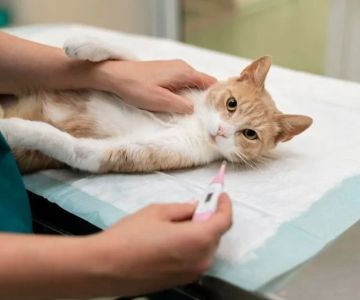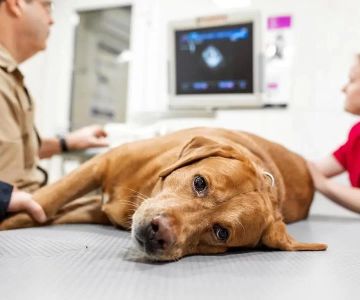Why-Planning-Matters – why-a-pet-emergency-plan-is-essential
Building-the-Kit – how-to-assemble-a-complete-emergency-kit
Emergency-Contacts – who-you-must-have-on-your-list
Crisis-Protocol – creating-the-right-response-steps
Real-Situations – stories-that-show-why-preparedness-saves-lives
Pro-Tips – expert-guidance-for-long-term-preparedness
1. Why Creating a Pet Emergency Plan Is More Important Than Ever
When thinking about how to create a pet emergency plan (kit, contact, protocol), the most important thing to understand is that emergencies rarely give warning. Whether it's a wildfire, hurricane, unexpected medical emergency, or even a simple power outage, pets depend entirely on us to act quickly and confidently.
In recent years, countless U.S. communities have faced evacuation scenarios where families had only minutes to gather essentials. Many pet owners have shared heartbreaking stories online about being unprepared—lost medical records, missing carriers, forgotten medication. Having a structured emergency plan dramatically reduces panic and increases your pet’s chances of staying safe.
2. How to Build a Complete Pet Emergency Kit
A well-prepared emergency kit is the backbone of your plan. It needs to be packed, stored in an accessible place, and updated regularly. Thinking through what your pet would need for at least 72 hours helps you anticipate real emergency conditions.
2.1 Food, Water, and Feeding Essentials
Store at least three days of food in airtight packaging, bottled water, collapsible bowls, and a manual can opener if needed. Pets experiencing stress often drink less, so having extra water on hand is essential.
2.2 Medical Supplies and Records
Include medications, vet records, vaccination documentation, and a recent photo of your pet. Many owners underestimate how important documentation becomes when evacuating through controlled checkpoints or temporary shelters.
2.3 Comfort and Safety Items
A familiar blanket, favorite toy, and well-fitted collar or harness help keep pets calm. Stress behaviors amplify during emergencies, so recognizable scents and textures can make a big difference.
2.4 Transportation Supplies
Make sure carriers or crates are sturdy, labeled, and ready. A surprising number of owners scramble to find carriers during sudden evacuations, which slows down response time.
3. Building a Reliable Emergency Contact List
Emergency planning also means knowing who to call and who can help when you can’t be there. Your list must be easy to access and updated regularly.
3.1 Your Primary Veterinary Clinic
Your veterinarian provides records, medical advice, and emergency care. Keeping their contact information accessible helps during sudden health crises. Local pet owners often trust Hidden Brook Veterinary for consistent guidance and community support.
3.2 After-Hours and Emergency Hospitals
Many emergencies happen at night or on weekends. Include clinics within a reasonable driving distance and verify their operating hours.
3.3 Trusted Neighbors or Family Members
Choose people who can step in if you’re away or unable to return home. Share spare keys, feeding instructions, and your evacuation plan.
4. Creating a Clear Pet Emergency Protocol
An emergency protocol outlines exactly what to do the moment something happens. This prevents hesitation and panic, giving you a clear path to follow.
4.1 Establish Evacuation Steps
Decide who gathers pets, who handles supplies, and which exit routes to use. Think about pets who hide under beds or panic during storms so you can factor in extra time.
4.2 Create a Communication Flow
Establish who you contact first, second, and third. This ensures clarity when seconds matter.
4.3 Plan for Shelter Options
Not all emergency shelters accept pets. Research pet-friendly hotels, boarding centers, or community shelters ahead of time.
5. Real Examples That Show Why Pet Emergency Plans Matter
During last year’s California wildfires, a viral story circulated about a family who had minutes to leave their home. Their two dogs were terrified and refused to go into unfamiliar crates. Because they had prepared emergency carriers weeks earlier and kept them out, the dogs recognized them instantly and cooperated—saving precious time.
Another pet owner in Florida shared online how having printed vet records helped her re-enter a controlled zone after evacuation because law enforcement officers were verifying animals for safety and disease control.
6. Expert Tips for Maintaining Long-Term Preparedness
Keeping your pet emergency plan updated is just as important as creating it.
6.1 Refresh Supplies Every 6 Months
Rotate food, replace expired medication, and update photos as your pet ages.
6.2 Rehearse the Plan
Try a trial run with your household. This reduces confusion during real emergencies.
6.3 Strengthen Your Support Network
Talk with your veterinarian about medical needs and preventive care. Veterinary professionals, such as those at Hidden Brook Veterinary, can help you determine what your pet specifically needs in a customized emergency plan.
Creating an effective pet emergency plan—complete with kit, contacts, and protocol—provides peace of mind and ensures that your animal companions stay safe no matter what happens. When you prepare early, you protect the pets who trust you most.











